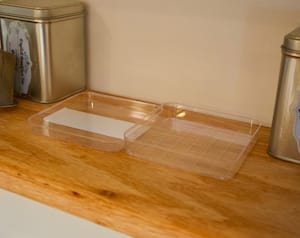The Indoor Air Microbiome
Why should we care about mold in indoor air?
Allergy
The most common human effect and the main reason that we should care about the amount of mold in the air we breathe.
Intoxication
May occur because filamentous molds make many types of mycotoxins. Although the concentration of mold spores is normally too low to pose an acute risk, exposure to lower levels over long periods may affect health.
Disease
Fortunately, disease is the least likely impact because very few fungi can cause disease by inhalation of spores. If, however, a person’s immune system is suppressed or compromised, many other fungi pose a risk.
What is Mold?
Molds, also known as fungi, form their own kingdom of life. Molds come in two basic types, yeasts and filaments, both of which are found in air. Like us, molds need food and water.

Yeasts are small cells shaped like balloons that live in wet food and bud to make more yeast cells.

Filaments are tiny threads that grow into wet or dry food to make colonies that can be as small as your finger nail or large enough to cover a forest. Bob Blaylock.
How does mold get in the air?
Spore Production
Mold colonies produce mold spores from modified filaments or from larger structures,
such as mushrooms, which also are composed of filaments.

Modified filaments making spores.
Spore Release
Molds time their spore release to maximize spread, often early in the morning.

Mushroom release spores from their gills.
Spore Amount
Outdoor air has about 1000 spores per liter (1 liter = 1.05 quarts).
How does mold get indoors?

Molds grow and make spores where there is moisture and food. Here, mold is sporulating
using wall board that is wet from a leaking sink.

Mold spores also enter homes through doors and windows and are carried indoors on our
clothing.

Indoor samplers collect spores settling from the air in our home for 24 hrs a day over
10 days.

Our homes should reduce the airborne spores to about 100 per liter, 1/10th
of outdoors.
How does MycoType detect and identify mold?
Passive Sampling
Mold spores settle onto MycoType samplers 24 hours over 10 days.

Indoor samplers collect spores settling from air in our home. We can put them back in
the air by our activity.

The outdoor sampler collects spores from the outside air to compare to indoor air.
Identification
Once sampling is complete, MycoType extracts DNA from the spores that settled. We
then sequence the DNA to identify the species and amount of mold present.
Comparison
MycoType then reports the species and amount of mold found indoors or outdoors. The
comparison of indoors and outdoors shows where mold may be growing indoors and from the species we
identify any species capable of making toxins.
Spore Production
Mold colonies produce mold spores from modified filaments or from larger structures, such as mushrooms, which also are composed of filaments.

Modified filaments making spores.
Spore Release
Molds time their spore release to maximize spread, often early in the morning.

Mushroom release spores from their gills.
Spore Amount
Outdoor air has about 1000 spores per liter (1 liter = 1.05 quarts).

Molds grow and make spores where there is moisture and food. Here, mold is sporulating using wall board that is wet from a leaking sink.

Mold spores also enter homes through doors and windows and are carried indoors on our clothing.

Indoor samplers collect spores settling from the air in our home for 24 hrs a day over 10 days.

Our homes should reduce the airborne spores to about 100 per liter, 1/10th of outdoors.
How does MycoType detect and identify mold?
Passive Sampling
Mold spores settle onto MycoType samplers 24 hours over 10 days.

Indoor samplers collect spores settling from air in our home. We can put them back in
the air by our activity.

The outdoor sampler collects spores from the outside air to compare to indoor air.
Identification
Once sampling is complete, MycoType extracts DNA from the spores that settled. We
then sequence the DNA to identify the species and amount of mold present.
Comparison
MycoType then reports the species and amount of mold found indoors or outdoors. The
comparison of indoors and outdoors shows where mold may be growing indoors and from the species we
identify any species capable of making toxins.
Passive Sampling
Mold spores settle onto MycoType samplers 24 hours over 10 days.

Indoor samplers collect spores settling from air in our home. We can put them back in the air by our activity.

The outdoor sampler collects spores from the outside air to compare to indoor air.
Identification
Once sampling is complete, MycoType extracts DNA from the spores that settled. We then sequence the DNA to identify the species and amount of mold present.
Comparison
MycoType then reports the species and amount of mold found indoors or outdoors. The comparison of indoors and outdoors shows where mold may be growing indoors and from the species we identify any species capable of making toxins.